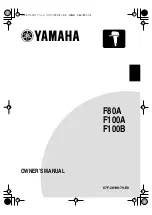
MIPI-10 pin
STDC14 pin
CN7
Designation
7
9
T_JRCLK
Not used by SWD protocol, Target JRCLK (T_JRCLK) using JTAG protocol,
only for specific use
8
10
T_JTDI
Not used by SWD protocol, Target JTDI (T_JTDI) using JTAG protocol, only
for external tools
9
11
GNDDetect
GND detect for plug indicator, used on SWD and JTAG neither
10
12
T_NRST
Target NRST using SWD protocol or Target JTMS (T_JTMS) using JTAG
protocol
-
13
T_VCP_RX
Target RX used for VCP (must be UART dedicated to Bootloader)
-
14
T_VCP_TX
Target TX used for VCP (must be UART dedicated to Bootloader)
6.2
Power supply
The STM32H735G-DK Discovery kit is designed to be powered by a 5 V DC power source. One of the following
five inputs can be used, upon appropriate board configuration:
1.
Micro-B USB receptacle CN15 of STLINK-V3E without enumeration: up to 500 mA can be supplied to the
board (JP7 jumper setting on ‘CHGR’ position on the silkscreen)
2.
Micro-B USB receptacle CN15 of STLINK-V3E with enumeration feature (see Supplying the board through
the STLINK-V3E USB port), up to 500 mA can be supplied to the board (JP7 jumper setting ’STLK’ position
on the silkscreen)
3.
An external 7 to 12V power supply from CN5 pin 8: name VIN on the silkscreen, extension connectors for
ARDUINO
®
Uno shields or daughterboard (JP7 jumper setting on ‘E5V’ on the silkscreen).
4.
48V DC power from RJ45 connector CN3 (Ethernet): In this case, the on-board module POE (Power Over
Ethernet) generates the 5 V supply voltage with up to 600 mA. This module is a powered device complying
with IEEE 802.3af, class ½ standard. The external power supply must be fully IEEE 802.3af compliant (JP7
jumper setting on ‘POE5V’ on the silkscreen).
5.
Micro-AB USB receptacle CN14 of the USB_OTG_FS interface: marked USB OTG FS on the board. (JP7
jumper setting on ‘USBFS’ on the silkscreen).
The LD5 green LED turns ON when the voltage on the power line marked 5V is present. All supply lines required
for the operation of the STM32H735G-DK components are derived from this 5V line.
Note:
The Discovery board must be powered by a power supply unit or by auxiliary equipment complying with the
standard EN-60950-1: 2006+A11/2009, and must be Safety Extra Low Voltage (SELV) with limited power
capability.
6.2.1
Supplying the board through the STLINK-V3E USB port: 5 V/500 mA
To power the STM32H735G-DK in this way, the USB host (a PC) gets connected to the Micro-B USB receptacle
of the board via a USB cable. The connection event starts with the USB enumeration procedure. In its initial
phase, the host USB port current supply capability is limited to 100 mA. This is sufficient since only the STLINK-
V3E part of the STM32H735G-DK draws power at that time: The U23 STMPS2151 power switch is set to the OFF
position, which isolates the rest of the board from the power source.
In the next phase of the enumeration procedure, the host PC informs the STLINK-V3E that it is able to supply
current up to 300 mA. If the answer is positive, the STLINK-V3E sets the U23 STMPS2151 switch to the ON
position to supply power to the rest of the board. Otherwise, CN5 pin8 (VIN) can be used to supply the board
instead. If a short-circuit occurs on the board, the STMPS2151 power switch protects the USB port of the host PC
against a current demand exceeding 500 mA. In such an event, the LD3 LED lights up.
The STM32H735G-DK board can also be supplied from a USB power source that does not support enumeration,
such as a USB charger. In this case, the STLINK-V3E bypasses STMPS2151 power regardless of the
enumeration procedure result and passes the power unconditionally to the board. The LD5 green LED turns ON
whenever the whole board is powered.
6.2.2
Supplying the board from VIN: 7 V to 12 V/800 mA
It may happen that the STM32H735G-DK board requires a supply current higher than 500 mA. In such a case,
the board can be supplied through pin8 (marked ‘VIN’ on the board) of the CN5 ARDUINO
®
connector.
UM2679
Power supply
UM2679
-
Rev 1
page 12/42













































